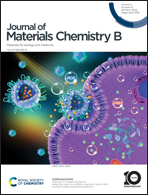Response of mesenchymal stem cells to surface topography of scaffolds and the underlying mechanisms
Abstract
Mesenchymal stem/stromal cells (MSCs) serve as essential components of regenerative medicine. Their destiny is influenced by the interaction of the cells with the external environment. In addition to the biochemical cues in a microenvironment, physical cues of the topography of the surrounding materials such as the extracellular matrix emerge as a crucial regulator of stem cell destiny and function. With recent advances in technologies of materials production and surface modification, surfaces with micro/nanotopographical characteristics can be fabricated to mimic the micro/nanoscale mechanical stimuli of the extracellular matrix environment and regulate the biological behavior of cells. Understanding the interaction of cells with the topography of a surface is conducive to the control of stem cell fate for application in regenerative medicine. However, the mechanisms by which topography affects the biological behavior of stem cells have not been fully elucidated. This review will present the effects of surface topography at the nano/micrometer scale on stem cell adhesion, morphology, proliferation, migration, and differentiation. It also focuses on discussing current theories about the sensing and recognition of surface topology cues, the transduction of the extracellular cues into plasma, and the final activation of related signaling pathways and downstream gene expression in MSCs. These insights will provide a theoretical basis for the future design of biomaterial scaffolds for application in regenerative medicine and tissue engineering.

- This article is part of the themed collection: Journal of Materials Chemistry B Recent Review Articles


 Please wait while we load your content...
Please wait while we load your content...